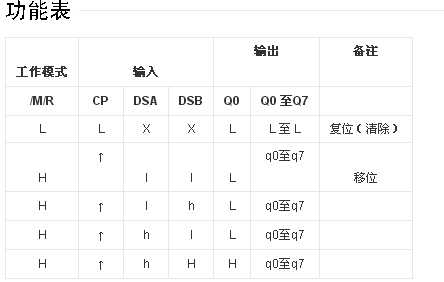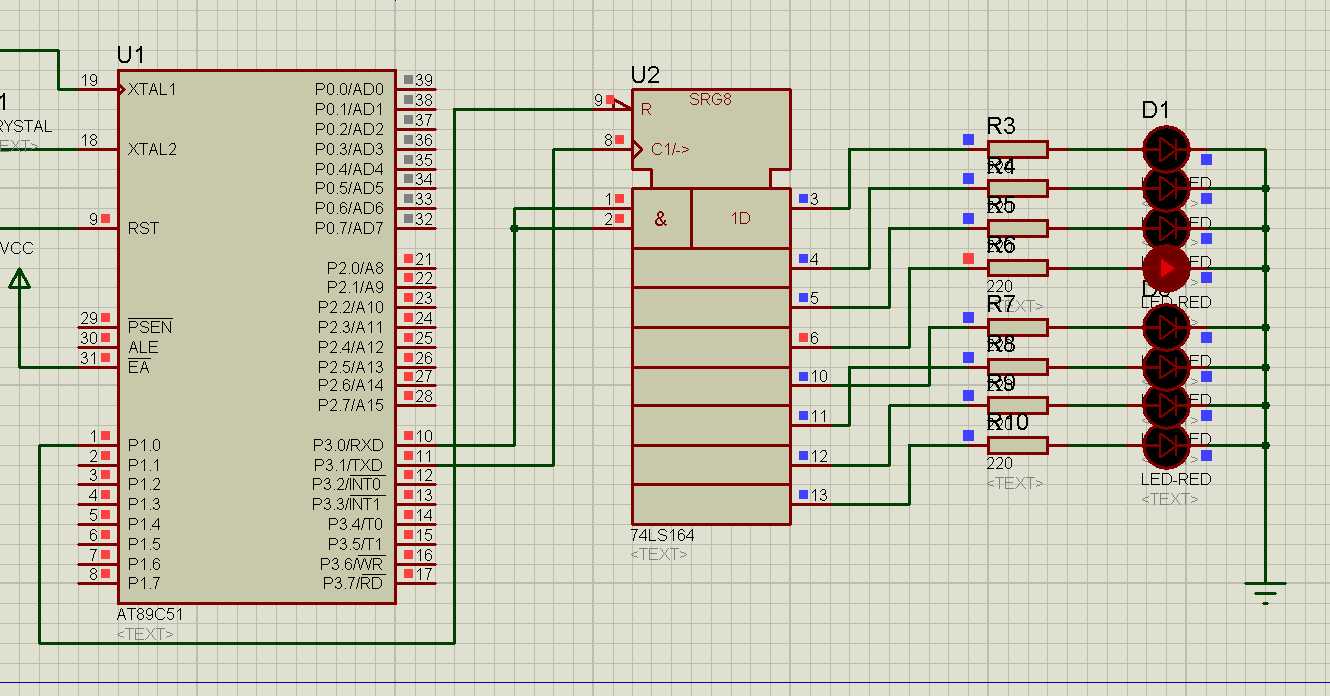标签:
1、先讲解74LS164 移位芯片:
74HC164、74HCT164 是 8 位边沿触发式移位寄存器,串行输入数据,然后并行输出。
数据通过两个输入端(DSA 或 DSB)之一串行输入;任一输入端可以用作高电平使能端,控制另一输入端的数据输入。两个输入端或者连接在一起,或者把不用的输入端接高电平,一定不要悬空。
时钟 (CP) 每次由低变高时,数据右移一位,输入到 Q0, Q0 是两个数据输入端(DSA和 DSB)的逻辑与,它将上升时钟沿之前保持一个建立时间的长度。


4、参考代码:
#include<reg52.h> #include<stdio.h> #define uchar8 unsigned char #define uint16 unsigned int sbit P1_0=0x90; // 为什么要这样写,P1口的字节地址就是 0x90 ,好像这样写也没有意义啊 // sbit LED=P0^6 uchar8 nSendByte ; void delay(uint16 i) // 延时函数 { uchar8 j; for(; i>0;i--) for(j=0;j<125;j++) ; } main() { SCON=0x00; EA=1; // 总中断允许 ES=1; // 允许串行总中断 nSendByte = 1; // 点亮数据初始化为 0000 0001 送入 nSendByte SBUF=nSendByte; // 向 SBUF 缓冲器 写入点亮数据,启动串行发送 P1_0=0; while(1) { ; } } void Serial_Port( ) interrupt 4 using 0 { if(T1) // 如果 T1=1;1个字节串行发送完毕 { P1_0=1; // 也就是 0x90=1;??? 允许 74LS164芯片并行输出,流水灯点亮发光二极管 SBUF=nSendByte; // 像 SBUF 写入数据,启动串行发送 delay(500); P1_0=0; // P1_0=0; 允许向 74LS164 芯片 串行写入 nSendByte = nSendByte<<1; if(nSendByte==0) nSendByte=1; // 判断点亮数据是否左移8次,是重新点亮数据 SBUF=nSendByte; } TI=0; RI=0; }
具体还是要自己勤于思考??多看看,多想想??
(九)串行口方式0 拓展并行输出端口 02 74LS164芯片
标签:
原文地址:http://www.cnblogs.com/shengruxiahua/p/5079792.html